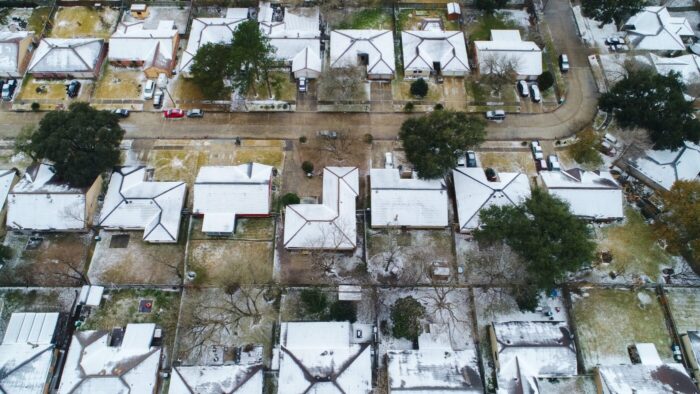Millions of Texans are surveying the damage done by last week’s severe winter storm. Many will likely need assistance from FEMA now that a growing number of Texas counties are eligible for federal help and can apply for Individual Assistance. FEMA Individual Assistance provides financial and direct services to eligible un- or under-insured individuals and households affected by a disaster. The assistance is intended to meet basic needs such as temporary housing and food.

FEMA, and America’s overall system for disaster recovery, is stretched terribly thin by the COVID-19 pandemic and a record-setting 2020 disaster season. Response at the scale necessary in Texas will put further pressure on FEMA and its limited resources (depending upon how much of the damage is insured).
COVID -19 instigated a change in how FEMA conducts damage assessment. Now, instead of home visits from inspectors, survivors will be asked to self-report damage to FEMA over the phone. As we learned during last year’s hurricane season, survivors are not trained in damage assessment and they often under-report. This contributes to further inequities within a broken system.
We’ve written before about how disasters have greater impact on low-income and minority communities and how the recovery process deepens inequality. That is already playing out in Texas. “Low-income Texans of color bore some of the heaviest weight of the power outages as the inequities drawn into the state’s urban centers were exacerbated in crisis. And already more impacted by unemployment and devastation of the pandemic, their troubles won’t end after the storm clears and the heat is running again in their homes,” wrote the Texas Tribune last week.
Texans must self-advocate with insurers and with FEMA to get all the assistance they need. The first step is clearly and comprehensively communicating disaster damage to FEMA. FEMA may be all the assistance some families receive, so it is absolutely crucial that survivors get all the funding for which they are eligible. Our guide can help survivors prepare for the FEMA call.
As Texans begin the long road to recovery, it’s imperative that they know the FEMA assistance process is complicated. It requires people to advocate for themselves.
A quick overview:
- Apply to FEMA, you’ll likely be directed to the SBA (Small Business Association) to provide more information through an additional application.
- If you qualify for an SBA loan, take it. You can’t get any more FEMA money unless you take the SBA loan.
- If you don’t qualify for an SBA loan, reapply to FEMA again. Here’s our guide for navigating this entire process.
Continue to ask questions along the way and don’t give up. Share your experiences, what you’ve learned and any other resources with friends and neighbors. You can be each others’ support network.
In addition to our FEMA guide, we have other helpful recovery resources here.
Reese May, is the chief strategy and innovation officer for SBP, a national disaster resilience and recovery organization. He leads SBP’s disaster preparedness and recovery efforts across the country, advises state and local decision-makers on effective long-term disaster recovery programs and advocates for policy change at the federal level. He is a Truman National Security Fellow.

